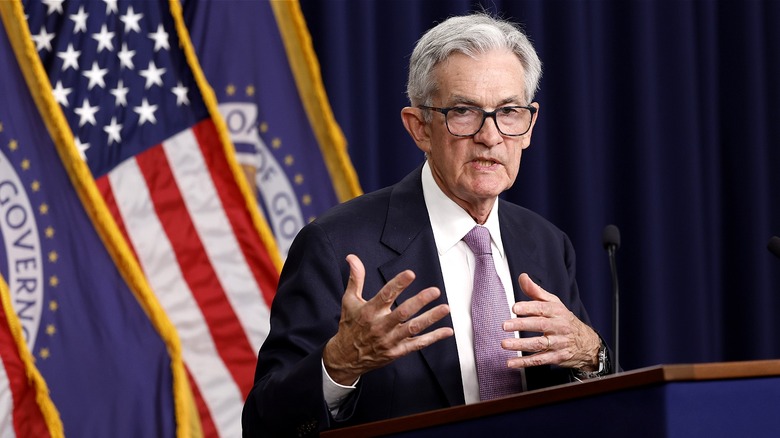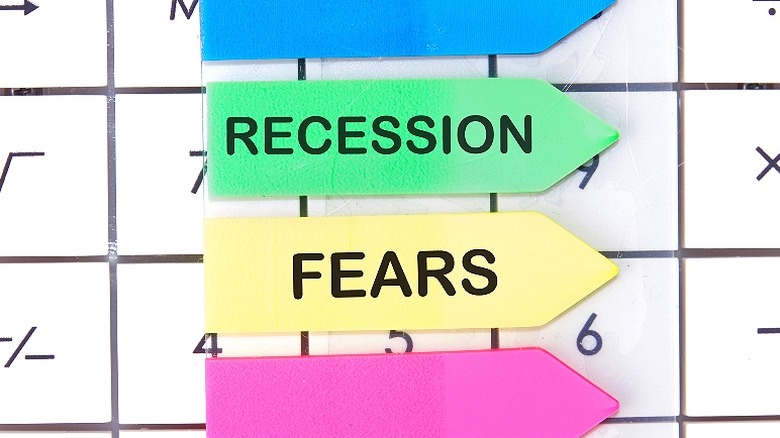What Has Happened In The Past After An Interest Rate Cut?
After months of predictions, the Federal Reserve finally lowered interest rates on September 18, 2024. Despite growing pressure from Wall Street, and an uptick in unemployment, the Fed remained confident in its approach throughout the summer. Fed Chair Jerome Powell explained, "The labor market is in solid condition, and our intention with our policy move today is to keep it there. [...] The U.S. economy is in good shape. It's growing at a solid pace, inflation is coming down. The labor market is at a strong pace. We want to keep it there. That's what we're doing."
If you're thinking it was conservative to only cut rates by a half-point, it's important to realize this was actually quite a bold move on the Fed's behalf. In addition to the fact that the decision was not a unanimous one (Federal Reserve Governor Michelle Bowman dissented on the decision in favor of a more modest quarter-point cut, which was widely predicted to be the actual rate cut), the half-point cut signaled a sense of urgency. Plus, the Fed unofficially signaled that additional rate cuts would happen before the end of the year.
However, there's a lot to understand about how the Fed's interest rate cuts could affect the nation's economy both in the short and long term. As the Fed continues to walk the line of keeping inflation at bay while avoiding an unemployment spike, there are a lot of moving parts that could ultimately affect the economy, and you, through the rest of the year.
Recession outlook
One of the primary concerns of the Fed, and a major reason as to why it maintained high interest rates for as long as it did, was rooted in avoiding a potential recession (here are the red flags of one). While higher interest rates helped to cool down the economy and, in turn, bring down inflation rates, finding the right balance of cooling without causing a recession in the process can be tricky. Now that the Fed has begun to move the needle down on interest rates, this could lead to a certain level of volatility that might ultimately affect the country's ability to stick a soft landing for the economy. Plus, it's important to consider past examples in American history when trying to predict what the recession outlook could be.
For starters, before you get too excited at the prospect of lower interest rates, note that the Federal Reserve tends to cut interest rates ahead of worsening economic conditions. In many ways, cutting rates helps to soften the economic blow that is coming, meaning the country could be in for bumpy weather. When looking at the Fed's six pre-pandemic interest rate-cutting cycles, the economy fell into a recession, on average, 18 months after the Fed started the cutting process. However, it is not always a guarantee, and historically it has not always been as immediate. With that in mind, a U.S. Treasury yield recession indicator became a concern for economists in mid-September of this year, signaling that we could be heading for a recession much sooner than anyone was hoping. (This, by the way, is how long the average recession lasts.)
Immediate consumer impact
While the larger economy has wide-reaching (and long-term) impacts on consumers, you might be more curious about how the recent Fed's rate cut will affect your everyday life today. For starters, the cost of interest payments on any debts, loans, or mortgages could see a drop depending on whether or not the financing is linked to prime rates (which are generally in keeping with the Fed's target rates). Similarly, interest rates on new loans and mortgages could see a change. While fixed-rate mortgages won't experience much of an impact/change from the Fed's rate cut, adjustable-rate mortgages and home-equity loans (and home-equity lines of credit also known as HELOCs) could see a decrease, depending on how they're linked to prime rates.
Credit cards with variable rates could also experience a decrease in interest charges. However, if your credit card offers a fixed rate, keep in mind that your credit card issuer can change the interest rate whenever it wants, regardless of the Fed's decisions. Also, an important downside to consider with interest rate cuts is that your available certificate-of-deposit options and savings accounts could see a decline in their annual percentage yields. While a high-yield savings account is still a key way to combat inflation, some of the especially high APY rates that have been available over the last year have been largely due to the Fed's high interest rates. That means, as the Fed begins to lower its rates, you can expect your savings APY to drop as well.


